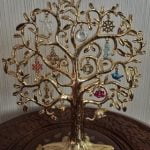Introduction
Feng Shui is an ancient practice originally used to bring luck and balance to a building or living space. In its simplest form, Feng Shui is the energy of the environment; it is believed by many that balancing this energy can create a positive and auspicious atmosphere. It involves assessing a building, or room, in terms of its architecture in order to identify and fix any missing corners that may be hindering the natural flow of energy. By balancing the energy of the space, people can ensure that their environment is optimized for productivity, health, and happiness.
Furthermore, lacking harmonious energy flow often leads to stagnation, which then creates negatively-charged experiences such as blocked pathways for success or worsened mental clarity. Therefore, having balanced Feng Shui is extremely important to support well-being and good fortune. Identifying and rectifying any missing corners can go a long way towards ensuring an environment of peace and prosperity. With every corner filled and connected with walls properly aligned with each other, spaces become places open to growth as opposed to being stagnate areas of unrest.
Origin and History of Feng Shui
Feng Shui is a practice originating from China over 8,000 years ago. It is a philosophy in which the art and science of placing objects, buildings and space has an impact on energy flow in the natural environment. One example of this can be seen in the Forbidden City in Beijing which was constructed 500 years ago following ancient rules of Feng Shui. According to Feng Shui theory, this magnificent site was arranged as to not disrupt the cosmic balance of nature by following certain principles such as orientation towards important directions, avoiding “unfavorable” angles (e.g. being located under hills) or missing corners.
Significance of Missing Corners
Missing corners in Feng Shui can disrupt the flow of energy, known as ‘chi.’ According to this ancient Chinese practice, chi needs to move in an uninterrupted circular pattern for balance and harmony. When a corner is missing from the building structure, it creates gaps in this circulation of energy which could lead to discord and disharmony.
Additionally, these missing corners can create too much yin (passive) or yang (active) energy which could hinder the natural balance of energies within the space. Not only will this throw off the balance of energies, it can also block/divert essential feng shui elements that are essential for a good outcome like prosperity, well-being or success. It could also create dead spots where critical functions like sleep or work or social interactions are not likely to be beneficial.
Analyzing the Area
1. Identify the Feng Shui Bagua Map: Start by getting familiar with the traditional Feng Shui Bagua map, which is an ancient tool used to analyze the energy in a space. The areas of the home correspond to different aspects of life: prosperity, health and relationships.
2. Observe and Analyze: Spend time observing the room or area you are working on. Note what colors are prominent in this space and any furniture that stands out. Pay attention to any excess clutter or misplaced objects that could cause disharmony among these energies.
3. Follow Your Intuition: When looking for missing corners, trust your intuition if something feels off balance in certain areas of your home or workplace—missing corners can be difficult to detect, so it might take some intuitive detective work before coming to a conclusion about where gaps may exist.
4. Check Multiple Perspectives: To get a complete picture of your surroundings, view them from multiple perspectives and angles throughout the day – notice how natural light diffuses through your living spaces at different times throughout the day regardless of season, location or weather conditions; pay attention to air flow activity (such as draughts or gusts); and observe any changes in temperature when you move around the dwelling either indoors or outdoors during all hours of day-light or darkness.
5 Missing Corners Test: A commonly accepted technique for discovering troublesome places within feng shui layouts is known as “The Missing Corners Test”; firstly assess where any missing corners are located within your property/space – take into account areas that feel uncomfortable, disorganised and disturbingly unbalanced when considering this identification task – then look for available textures, shapes and objects that can heal these spaces such as mirrors, plants and wind chimes.
Solutions for Missing Corners
1. Enhance the adjacent walls of the missing corner with bright colors. Paint the wall, hang brightly colored artwork, and arrange furniture around to draw attention away from the missing corner.
2. Hang a mirror in the corner to help reflect more energy into the space. Make sure not to face any bed directly towards it, however – this is known as a “poison arrow” in Feng Shui.
3. Use plants and accessories to soften sharp or stagnant energy and help fill the void in the space. Place lush plants and crystal lamps on tables or shelves, invest in cozy throw pillows and blankets, or arrange lucky bamboo stalks at various locations in the area for positive chi flow.
4. A simple cure for a missing corner is to place an aquarium or terrarium with living organisms in it (such as fish or turtles). The water is a great source of yin energy which will help balance out any harsh elements present in the room.
5. Curtains hung from ceiling-to-floor can also be used to hide any imperfection such as a missing corner while maintaining style and open space feel within your room’s design plan
Creating an Auspicious Space
A missing corner in Feng Shui can be balanced by incorporating elements of balance and harmony into the space. For example, if one of the four corners in a room is missing, adding a corner post or wall partition to create an imaginary corner can provide more stability and energy to the weakened area. Similarly, symmetrical furniture placement around the room can create balance and harmony even without the missing corners. Other options include hanging art or artwork in colors that represent different directions such as red (South), brown (northwest), blue (east) or white (southeast) to help bring auspicious energy into the room. Finally, strategically placed plants or greenery around the space can also enhance positive energy flow.
Conclusion
Feng Shui is an ancient cultural art based on the balancing of forces in a space. Its primary focus is to look at the energy in a space and create harmony between its inhabitants and the environment. Feng Shui proposes that missing corners, or spaces with no structure or element present, are areas of unbalanced chi (energy) in your space. By using different elements-such as furniture, artwork, plants, lamps, mirrors, etc.-you can bring back balance to these areas and encourage flow of positive energy throughout your living area. Additionally, through thoughtful placement of feng shui tools like wind chimes and crystals, you are able to fill a room with energy connected to the specific intentions or goals you have set out for yourself. Ultimately, harnessing the power of Feng Shui can create an atmosphere full of peace and abundance while promoting improved productivity and wellbeing.

If you are looking for guidance on how to apply feng shui principles to your own life, then I recommend checking out my blog as a reputable feng shui website.





